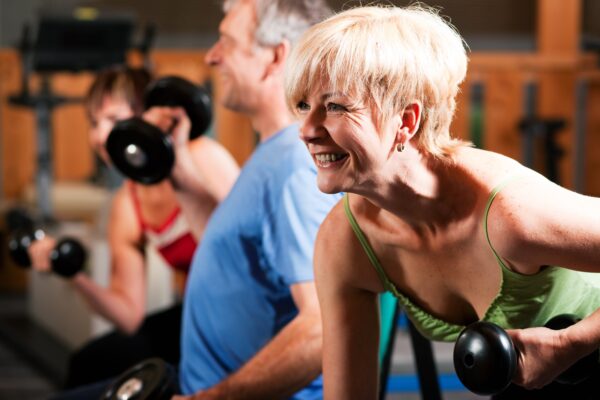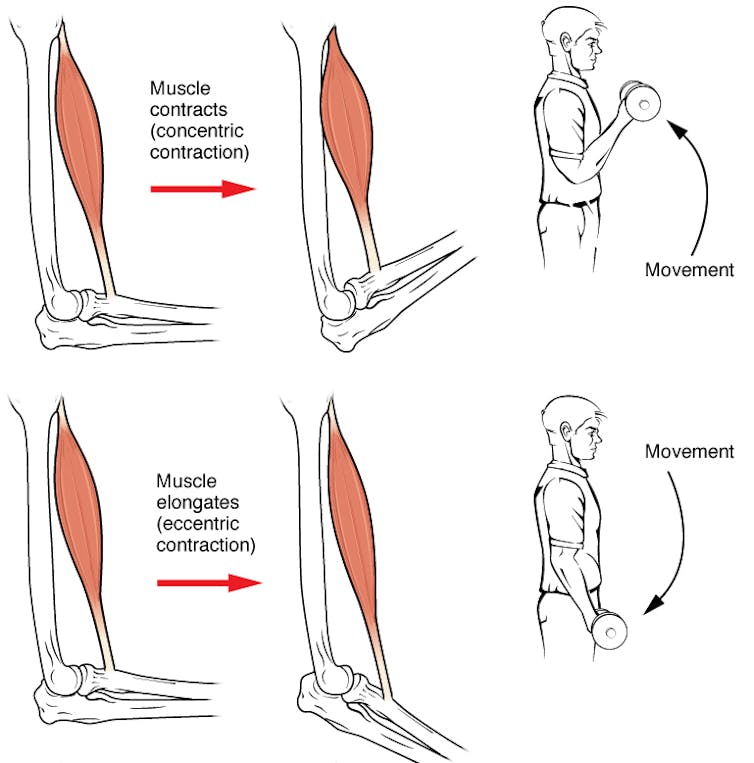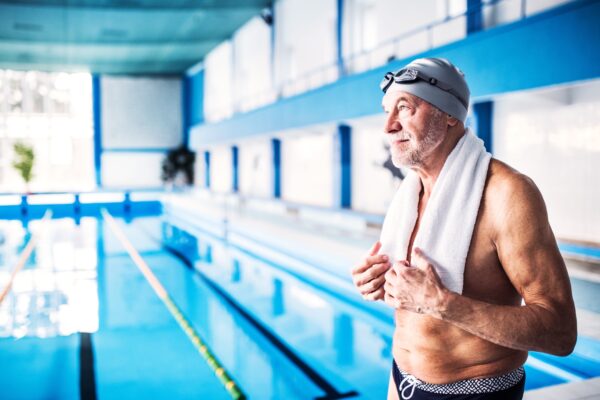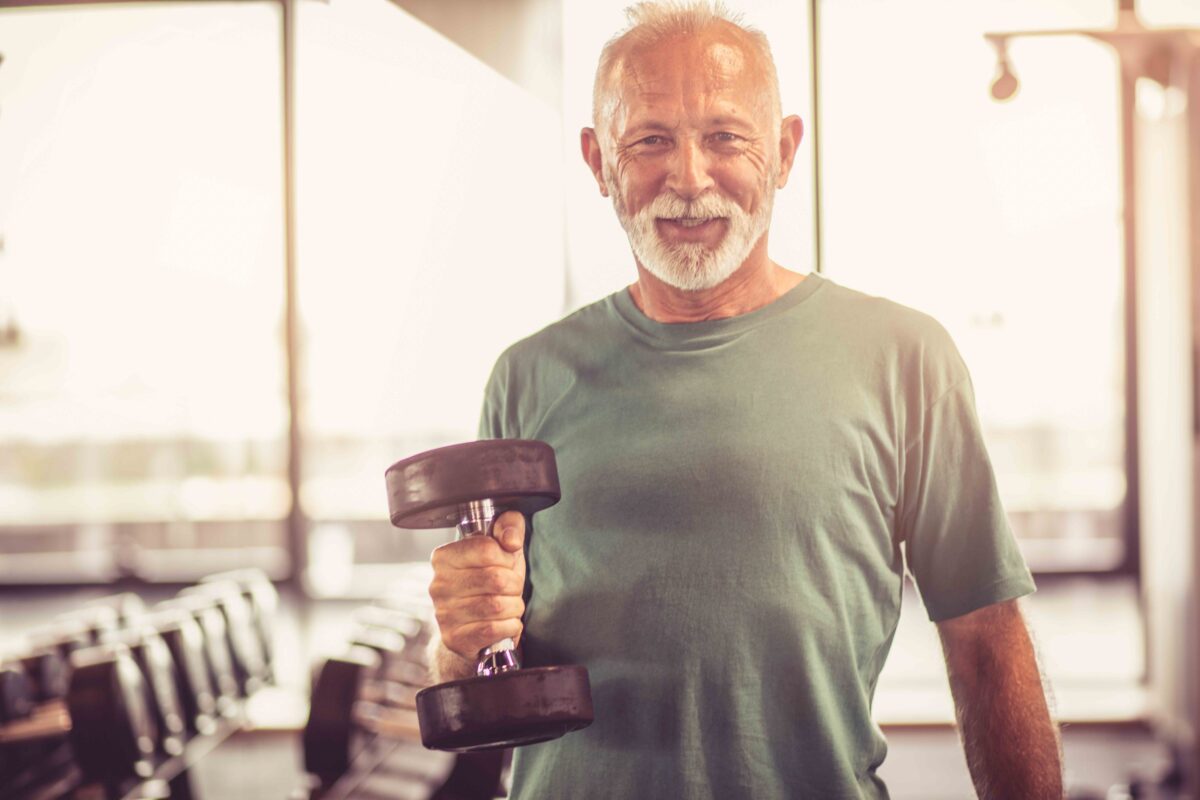There is perhaps no better way to see the absolute pinnacle of human athletic abilities than by watching the Olympics. But at this year’s Winter Games, and at almost every professional sporting event, you rarely see a competitor over 40 and you almost never see a single athlete over 50. That’s because With each additional year spent on Earth, bodies age and muscles do not respond to exercise as well as before.
I lead a team of scientists studying the health benefits of exercise, strength training, and diet in older people. We investigate how older people respond to exercise and seek to understand the underlying biological mechanisms that cause muscles to increase in size and strength after resistance or strength training.
The old and the young build muscle the same way. But as you age, many of the biological processes that turn exercise into muscle become less effective. This makes it more difficult for older people to build strength, but it also makes it that much more important for everyone to continue to exercise as they age.
 Lifting weights and doing push-ups and other strength training exercises make muscles grow in size and strength. (Kzenon/Shutterstock)
Lifting weights and doing push-ups and other strength training exercises make muscles grow in size and strength. (Kzenon/Shutterstock)How the body builds muscle
The exercise I study is the kind that makes you stronger. Strength training includes exercises like push-ups and sit-ups, but also weight lifting and resistance training with bands or training machines.
When you do strength training, over time exercises that seemed difficult at first become easier as your muscles increase in strength and size, a process called hypertrophy. Larger muscles simply have larger muscle fibers and cells, and this allows you to lift heavier weights. As you continue to exercise, you can continue to increase the difficulty or weight of the exercises as your muscles get bigger and stronger.
It’s easy to see that working out makes muscles bigger, but what actually happens to cells as muscles increase in strength and size in response to resistance training?


Every time you move your body, you do so by shortening and pulling your muscles, a process called contraction. This is how muscles expend energy to generate force and produce movement. Every time you contract a muscle, especially when you have to work hard to make the contraction, like when you lift weights, the action causes changes in the levels of various chemicals in the muscles. In addition to chemical changes, there are also specialized receptors on the surface of muscle cells that detect when you move a muscle, generate force, or otherwise. alter the biochemical machinery within a muscle.
In a healthy young person, when these chemical and mechanical sensory systems detect muscle movement, they activate a series of specialized chemical pathways within the muscle. These pathways, in turn, trigger the production of more protein that is incorporated into the muscle fibers and causes the muscle to increase in size.
These cellular pathways also activate genes that encode specific proteins in cells that make up the contraction machinery of muscles. This activation of gene expression is a longer-term process, in which genes become on or off for several hours after a single session of resistance exercise.
The overall effect of these many exercise-induced changes is to make your muscles grow.
How major muscles change
While the basic biology of all people, young or old, is more or less the same, there is something behind the lack of older people in professional sports. So what changes in a person’s muscles as he ages?
What my colleagues and I discovered in our research is that in young muscles, a little bit of exercise produces a strong signal for a lot of processes that trigger muscle growth. In the muscles of older people, by comparison, the the signal that tells muscles to grow is much weaker for a given amount of exercise. These changes begin to occur when a person reaches around 50 years of age and become more pronounced as time goes on.
In a recent study, we wanted to see if changes in signaling were accompanied by any changes in which genes, and how many of them, respond to exercise. Using a technique that allowed us to measure changes in thousands of genes in response to endurance exercise, we found that when young men exercise, there are changes in the expression of more than 150 genes. When we look at older men, we find changes in expression of only 42 genes. This difference in gene expression seems to explain, at least in part, the most visible variation between how the young and the old respond to resistance training.

 Strength training can help maintain overall fitness and allow you to continue doing other things you enjoy as you get older. (Half point/Shutterstock)
Strength training can help maintain overall fitness and allow you to continue doing other things you enjoy as you get older. (Half point/Shutterstock)Stay fit as you age
When you add up all the various molecular differences in how older adults respond to strength training, the result is that older people do not gain muscle mass as well as younger people.
But this reality should not discourage older people from exercising. If anything, it should encourage you to exercise more as you age.
Exercise is still one of the most important activities older adults can do for their health. The work that my colleagues and I have done clearly shows that although responses to training decline with age, they are by no means zero.
We show that older adults with mobility problems who participate in a regular program of aerobic and resistance exercise can reduce your risk of becoming disabled by about 20%. We also found a similar 20% reduction in the risk of becoming disabled between people who are already physically frail if they did the same training program.
While younger people can get stronger and build bigger muscles much faster than their older counterparts, older people still reap incredibly valuable health benefits from exercise, including increased strength, physical function, and reduced disability. So the next time you’re breaking a sweat during a training session, remember that you’re building the muscular strength that’s vital for maintaining mobility and good health for a long life.
roger fieldAssociate Director of the Jean Mayer USDA Human Nutrition Research Center on Aging, Professor of Medicine, tufts university This article is republished from The conversation under a Creative Commons license. Read the Original article.
.
